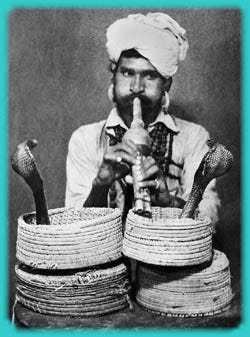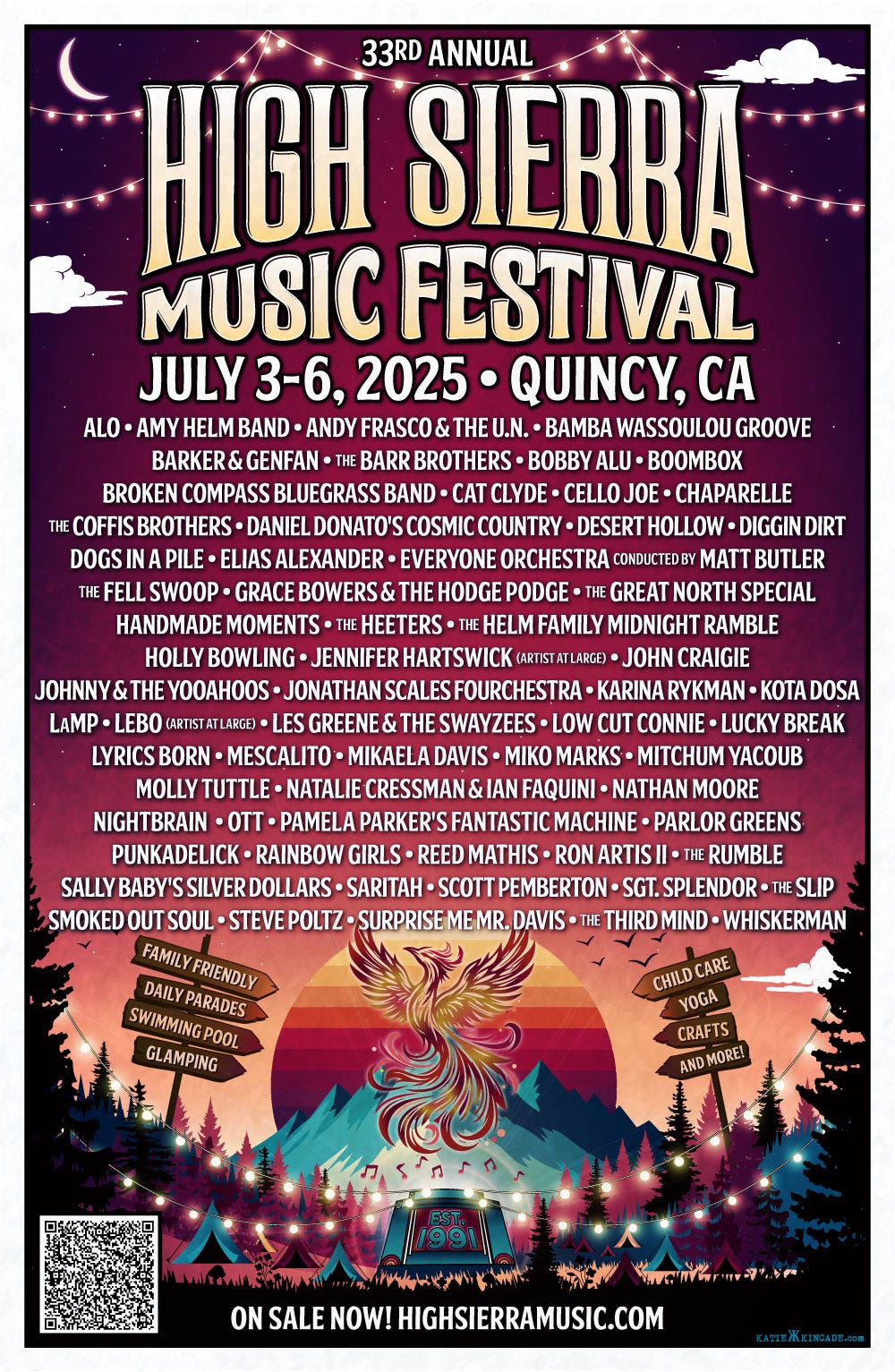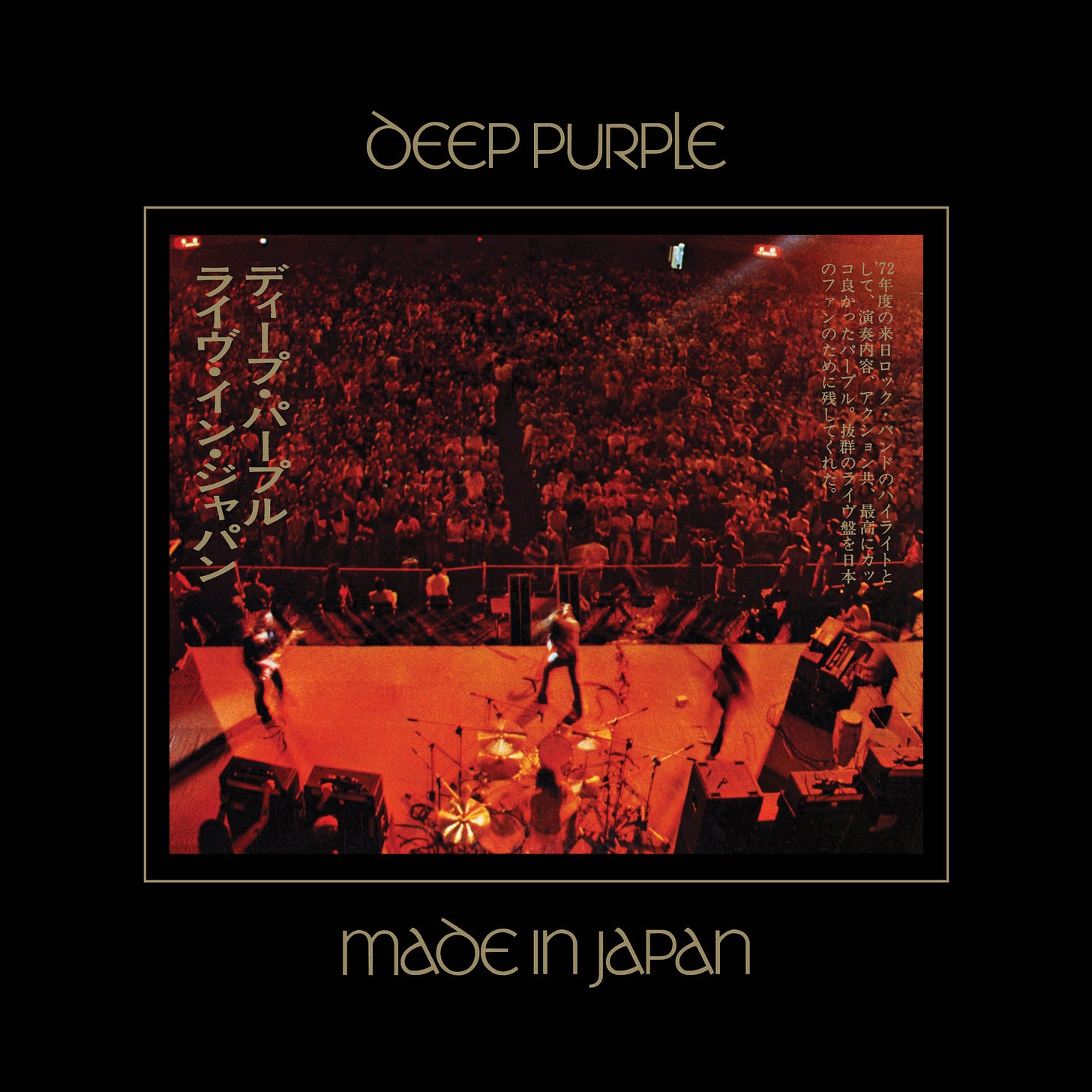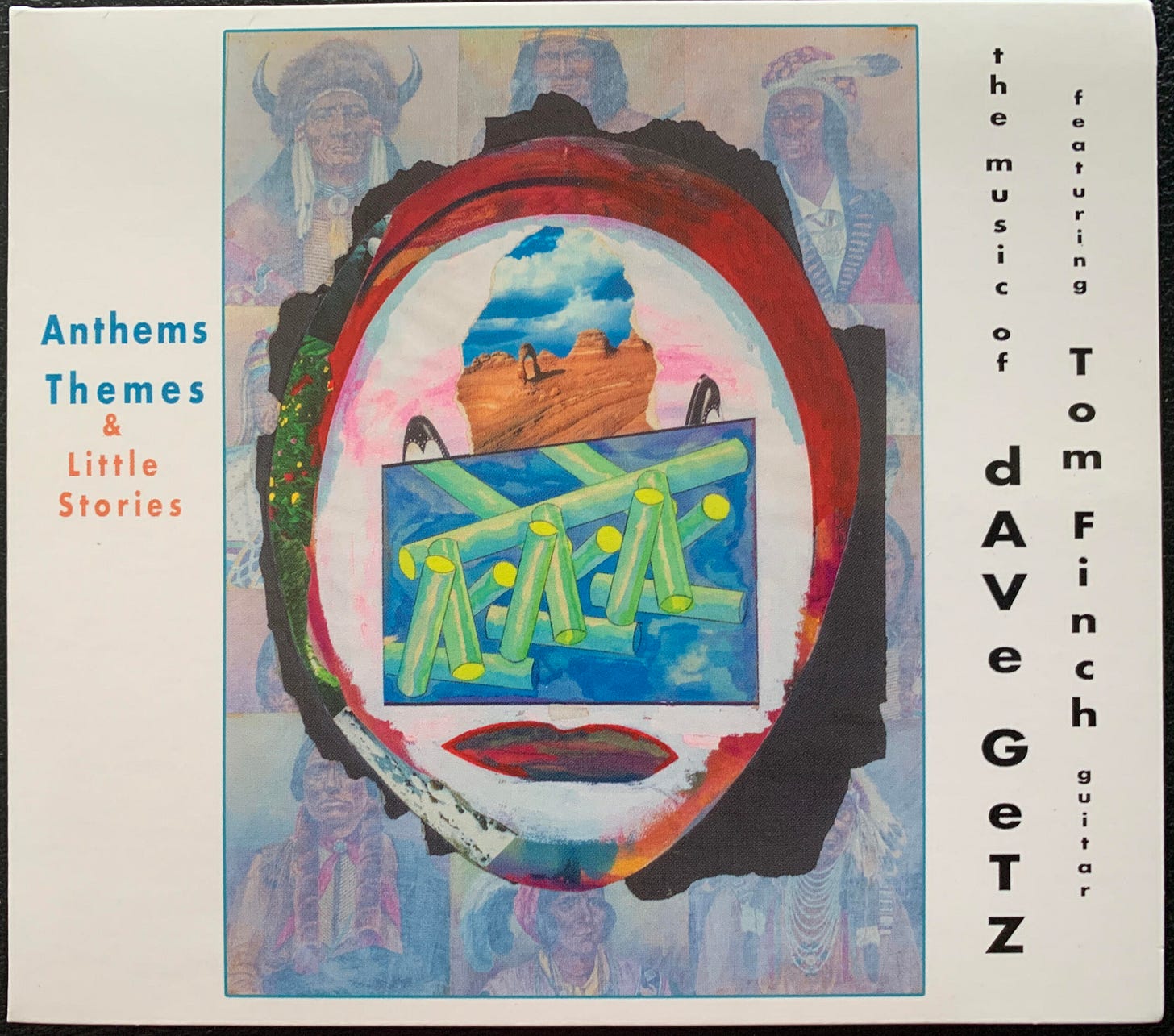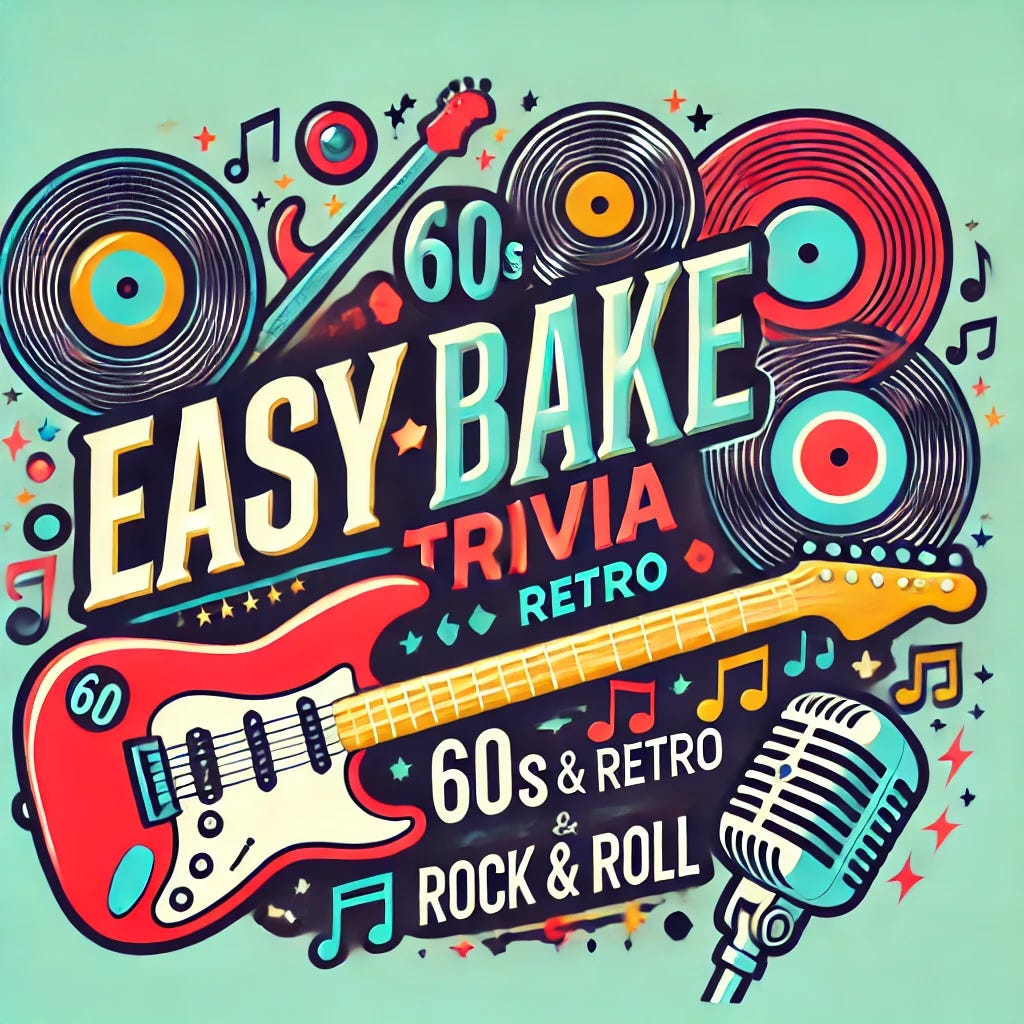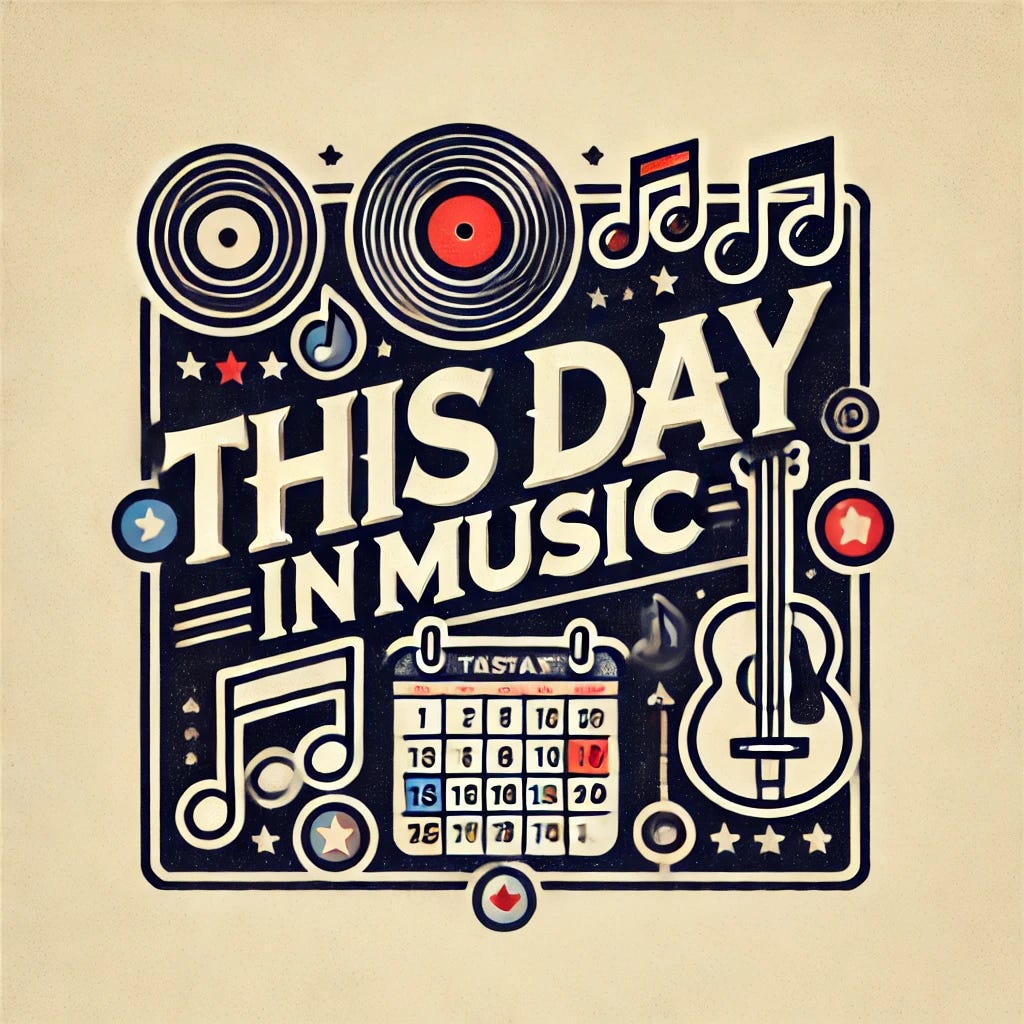PUNMASTER MusicWire by David Gross
A trusted source of music news since 1873 ~ All the news that's fit to be tied
* THE HARDEST WORKING NEWSLETTER IN SHOW BUSINESS *
Made possible by your support
Whoa, Substack lightnin'
Shinin' just like gold
Why don't you hear me cryin'?
A-whoo-hoo, a-whoo-hoo, whoo
June 24, 2025
Mick Ralphs, Rock Architect of Riff and Restraint, Dies at 81
By David Gross, Punmaster MusicWire
Mick Ralphs never needed flash. He had feel. And in the business of British rock guitar, that made him a quiet giant among louder men.
Ralphs, who died this week at 81, was the engine behind two of England’s most enduring rock institutions: Mott the Hoople and Bad Company. His riffs were sinewy, his solos understated, and his songs deceptively simple—crafted for the long haul, not the quick win. “Can’t Get Enough,” “Ready for Love,” and “Feel Like Makin’ Love” weren’t just hits; they were blueprints for what a guitar-driven anthem should sound like when it trades ego for groove.
Born in Stoke Lacy, Herefordshire, Ralphs was a blues obsessive by his teens and, like many of his generation, started his first real band in the shadow of the Stones and Yardbirds. But he always leaned more into melody than mayhem. With Mott the Hoople, he helped shape glam rock’s ragged elegance, penning tunes that strutted beneath Ian Hunter’s brainy bombast. His original version of “Ready for Love” on All the Young Dudes was brooding and majestic; by the time Bad Company reworked it for their debut, it had become a stadium sermon.
That 1974 Bad Company album didn’t just go to No. 1—it rewrote the rules for what a hard rock band on Led Zeppelin’s boutique label (Swan Song) could do. Ralphs’ guitar work on that record, especially the ringing open-G riff of “Can’t Get Enough,” became an eternal calling card for FM radio and cover bands alike. The song’s signature lick was so catchy it overshadowed the fact that the whole track was recorded live in one take. “It wasn’t perfect,” Ralphs said, “but it captured the moment.” That philosophy defined him.
Insiders knew Ralphs wasn’t a showboat. He was about tone. The Les Paul-through-a-Bedrock-amp kind of tone. His rhythm playing was airtight, and his solos were rarely more than what the song required. He was a songwriter first and a lead guitarist second—a rarity in 1970s rock. And it worked. He and Paul Rodgers forged one of rock’s most effortlessly effective writing partnerships, a blend of blues confidence and British craft.
In later years, Ralphs kept a low profile. After suffering a debilitating stroke following a 2016 reunion show at London’s O2 Arena, he stepped away from music altogether. But his legacy—on record, on stage, and in the DNA of every band that ever tried to write a Bad Company-style banger—is untouchable.
He’s survived by his wife Susie, a close-knit family, and the two bands that bear his fingerprints to this day. Mick Ralphs didn’t chase the spotlight. But he lit the stage every time he plugged in.
Rest easy, Mick. You were more than ready for love—you were ready for legend.
Rock ’n’ Roll’s Incidental Legends: When Bands Crashed the Plot
By Dee Gee, Punmaster MusicWire
Before MTV, before crossover branding became strategy, and before music supervision was its own Hollywood guild, rock bands had already begun slipping into film and television narratives—like smoke curling under a door. These weren’t promotional cameos or lip-synced segments on variety shows. These were narrative-integrated, plot-bound appearances—some fleeting, some jarringly immersive—where rock ’n’ roll oozed into the story like electricity into the walls.
Welcome to the world of incidental legends—bands and artists who became unexpected characters in TV and film, revealing rock’s stealthy infiltration of pop culture’s inner sanctum.
The 1950s: Rock Enters the Room, Uninvited
The postwar era’s films were already trying to capture teen energy when rock ’n’ roll crashed the party. Hollywood, still suspicious of longhairs and hip-swivelers, folded the music into stories about youth rebellion or culture clashes.
Bill Haley and His Comets – Rock Around the Clock (1956)
Yes, it was a vehicle—but it was also a sly documentary-in-disguise. The band doesn’t just perform; they exist within a meta-music business storyline. It was a canary in the coalmine: if a band could be in a movie, maybe it could shapeone.
The Platters – Girls Town (1959)
This morality-play-meets-biker-flick featured The Platters as a group performing at a church dance—part of the plot, not a cutaway. It was one of many '50s films that introduced music as a social pulse, not just set dressing.
Elvis Presley: The Original Rock Star on Film
Elvis wasn’t just the King of Rock ’n’ Roll—he was a movie star whose roles helped bridge music and narrative.
Loving You (1957): Elvis played a small-town musician navigating sudden fame, with performances of “Teddy Bear” and the title track woven into the plot.
Jailhouse Rock (1957): The film’s title number remains one of the most iconic moments in rock cinema, but Elvis’s character, Vince Everett, was a fully realized role, showing the darker side of stardom.
King Creole (1958): In this dramatic tale, Elvis played a troubled youth in New Orleans trying to escape a life of crime through music, giving one of his most nuanced performances.
Johnny Burnette and the Rock and Roll Trio
One of the earliest and most influential rockabilly acts, Johnny Burnette and the Rock and Roll Trio helped define the genre with their innovative sound and electrifying performances.
Rock, Rock, Rock! (1956): The trio’s fiery appearance in this musical film brought rockabilly to the forefront of popular culture, alongside other early rock icons like Chuck Berry.
Little Richard, Chuck Berry, and Fats Domino in The Girl Can’t Help It (1956)
This Technicolor comedy was a showcase for the era’s biggest stars. Little Richard’s performance of the title track, Chuck Berry’s “You Can’t Catch Me,” and Fats Domino’s “Blue Monday” highlighted the power and diversity of rock ’n’ roll.
Ricky Nelson in Rio Bravo (1959)
Known for his television success on The Adventures of Ozzie and Harriet, Ricky Nelson transitioned to film in Rio Bravo. Playing a gunslinger, he sang “My Rifle, My Pony, and Me” alongside Dean Martin, merging his rockabilly roots with classic Hollywood.
The 1960s: Rock Gets Cinematic—and Psychedelic
The Factory (featuring Lowell George) – F-Troop
In a memorable episode of the satirical Western comedy F-Troop, a fictional British Invasion-style band called The Bedbugs performs for the frontier town's bewildered residents. The band was actually The Factory, fronted by a young Lowell George on guitar and vocals. Drummer Richie Hayward rounded out the lineup—both would later co-found the revered roots-rock outfit Little Feat. The scene blends slapstick with surreal musical flair, capturing the absurdity of placing fuzz-toned rock into an Old West setting.
The ’60s were the first decade where rock musicians didn’t just appear in movies—they altered the visual language. The counterculture wasn’t window dressing anymore; it was narrative subtext.
The Grateful Dead & Big Brother and the Holding Company – Petulia (1968)
Richard Lester’s elegy for the dying optimism of the Haight features both bands in documentary-like sequences—grainy, ambient, unresolved. You don’t “watch” the Grateful Dead in Petulia—you wander through them. The handheld shots of Big Brother and Janis, mid-jam, function like ghost images, echoing the fading dreams of San Francisco. Few mainstream films ever captured the fraying seams of the ‘60s with such intimacy.
Insider Note: The Dead’s involvement came partly from Lester’s desire to show “real San Francisco,” not the Disney-fied version that was already emerging. He reportedly had to argue with Warner Bros. to include the unscored, unglamorous rehearsal-like footage.
The Yardbirds – Blow-Up (1966)
Antonioni’s cold London abstraction offers a club scene where The Yardbirds perform “Stroll On” with Jeff Beck and Jimmy Page on dueling guitars. When Beck smashes his instrument, it's not rock rebellion—it’s existential frustration. The music becomes part of the alienation. The crowd stands motionless, unimpressed. It's one of rock cinema’s most chilling inversions: the apocalypse is already over.
Insider Note: Beck’s guitar smashing was a stand-in for The Who, who were originally cast but dropped out. Beck reportedly didn't want to do it—but Antonioni insisted on destruction to complete his theme of emptiness and decay.
The Seeds – The Mothers-In-Law (1968)
An utterly bizarre insertion: garage-rock royalty The Seeds performed their hit “Pushin’ Too Hard” in a sitcom about meddling in-laws. They appear at a teen club where the parents go to retrieve their kids—but instead discover fuzz pedals and youth autonomy. It’s comedy, but also a subtle acknowledgment of a cultural line being drawn. The band’s presence wasn’t parody—it was confrontation.
The Standells – The Munsters (1965)
Episode: “Far Out Munsters.” The Standells rent the Munster mansion for a groovy bash, performing “Do the Ringo.” This wasn’t a variety show—it was a plot pivot. The family’s weirdness is embraced by the hip crowd. The band, ironically, plays straight man to the Munsters' accidental cool.
Insider Note: The Standells had a hit with “Dirty Water” the same year. Their Munsters appearance was taped weeks before the song charted, giving them a bizarre trivia crown: the first garage band to party with Frankenstein’s monster.
Buffalo Springfield – Mannix (1967)
In a dim nightclub during a gritty detective episode, Buffalo Springfield plays live in the background—uncredited. But it’s them. “Bluebird” spins out over a stakeout scene. There’s no intro, no commentary. It just is. That’s the genius of it: in a crime show built on secrecy and shadows, here’s a band capturing a cultural moment mid-vibration.
The Sacred Cows – Get Smart (1967)
In the episode “The Groovy Guru,” this fictional psychedelic band was used as a mind-control device, with their music driving audiences into a frenzy. The episode also name-dropped real-life legends like Simon & Garfunkel and the Grateful Dead as secret passwords.
Jefferson Airplane – A Moveable Fest (1968)
Shot at the top of a New York building, this short film by radical French filmmaker Jean-Luc Godard captures the band blasting out “The Ballad of You and Me and Pooneil” to stunned downtown onlookers—one of the most striking guerrilla performances ever filmed.
The 1970s: Rock Crosses into Character
By the '70s, the line between rock star and screen actor began to dissolve. The music didn’t just underscore scenes—it was baked into the DNA of the characters and stories.
David Bowie – The Man Who Fell to Earth (1976)
Bowie doesn’t sing in the film—but it might be his greatest rock performance. As the alien Thomas Jerome Newton, he’s fragile, haunted, a Ziggy-in-hiding. The film doesn’t use music; it is music. Every frame is composed like a Bowie lyric—detached, romantic, drowning in stardust.
Insider Note: Bowie, living on milk, peppers, and cocaine at the time, claimed later he was so high during filming that he was the character. The film doubled as accidental autobiography.
Alice Cooper – The Snoop Sisters (1974)
In this murder-mystery pilot starring elderly writers-turned-sleuths, Alice Cooper appears as himself. But it’s not just a cameo—it’s context. He’s part of the milieu of suspects. His gothic image and ambiguous menace are used to unsettle the viewer, and his role challenges the generational gap in the same way his stage shows challenged moralists.
Dr. John – Medicine Ball Caravan (1971)
Though technically a documentary, this counterculture travelogue places Dr. John and other artists into a quasi-fictional journey across America with a circus of freaks. The film dissolves the line between vérité and staged encounter, presenting the musicians not as stars but as spiritual travelers.
Frank Zappa (via Ringo Starr) – 200 Motels (1971)
Zappa’s surreal film features Ringo Starr playing “Frank Zappa,” alongside members of the Mothers of Invention. It’s rock's Ubu Roi, with sketches, satire, and sudden breaks into absurdist orchestral sequences. This wasn’t just a film with music—it was a film about the absurdity of making rock a commodity.
Insider Note: The film was one of the first to be shot entirely on videotape and then transferred to film—a pioneering technique that allowed Zappa to direct and edit in real time.
Incidental? Maybe. Transformative? Absolutely.
These appearances weren’t promos. They weren’t “guest stars.” These were cultural infiltrations—proof that rock bands weren’t just topping charts. They were haunting club scenes in foreign films, soundtracking noir detectives, and whispering through the cracks of sitcoms.
By slipping into narrative TV and film without fanfare, rock musicians became subtle agents of change. They didn’t sell the plot—they bent it. Their presence added danger, depth, or dissonance.
And often, they weren’t even acknowledged.
That’s the magic. In the moments when The Seeds roared through laugh-track suburbia or Janis Joplin wailed amid Lester’s urban malaise, rock wasn’t trying to impress anyone. It was just… there. Like a flickering tube amp in the next room.
Waiting to be heard.
Springsteen: Deliver Me From Nowhere | Official Trailer
Get ready for a raw ride down Thunder Road into the dark heart of one of rock’s most mysterious masterpieces. Jeremy Allen White is Bruce Springsteen in SPRINGSTEEN: DELIVER ME FROM NOWHERE, the electrifying new film from 20th Century Studios that pulls back the curtain on the most haunting album the Boss ever made — Nebraska.
In theaters October 24, this isn’t the stadium-shaking, denim-clad Bruce we’ve come to know. This is the man alone in a New Jersey bedroom with a 4-track recorder, laying down stark tales of murderers, dreamers, drifters, and desperate men teetering on the edge of hope. The movie dives deep into 1982, when Springsteen—on the verge of superstardom—chose to look inward instead of up, channeling his ghosts into what became Nebraska, an album of whispered anthems and American shadows.
Directed by Scott Cooper (Crazy Heart, Hostiles) and based on the book by Warren Zanes, Deliver Me from Nowherebrings together an all-star cast:
Jeremy Strong as trusted manager Jon Landau
Paul Walter Hauser as guitar tech Mike Batlan
Stephen Graham as Bruce’s volatile father, Doug
Gaby Hoffmann and Odessa Young as the women who shaped his home life and heart
Marc Maron and David Krumholtz as the studio minds trying to shape the record that couldn’t be shaped.
Nebraska wasn’t built for the charts — it was built for the soul. Now its story hits the screen with the same aching honesty and quiet fire that made the album a cult classic. Whether you're a hardcore fan or just hearing the ghost of “Highway Patrolman” for the first time, this film is a rare backstage pass to an artist at war with his own success.
“Springsteen: Deliver Me From Nowhere”
Only in theaters October 24, 2025
Sometimes the quietest voices echo the loudest.
Hot Fun In The Summertime - Narada Michael Walden - Official Music Video
Narada Michael Walden pays tribute to Sly and the Family Stone on his updated version of Hot Fun in the Summertime! Available June 20th on all platforms!
THE 33RD ANNUAL HIGH SIERA MUSIC FESTIVAL
The High Sierra Music Festival is where music lovers gather for four days of discovery, connection, and pure joy. With over 50 bands across multiple stages, the lineup blends fan favorites with fresh new talent, spanning genres from funk and jam to bluegrass, soul, rock, and more. There’s music all day and late into the night—including legendary collaborations, intimate playshops, and surprise sit-ins you won’t find anywhere else.
Set in the spectacular Feather River Canyon, it’s more than just a festival—it’s a welcoming community. Expect family-friendly vibes, camping under the pines, crisp mountain air, and star-filled skies. Want a little extra comfort? There are plenty of upgrade options to suit your style.
Now celebrating its 33rd year, High Sierra continues to be a destination for music fans who crave something real.
Explore the lineup and grab your tickets at highsierramusic.com
USE DISCOUNT CODE: 15DAVE
“Purple Reign: Deep Purple’s ‘Made in Japan’ Gets the Royal Treatment With Super Deluxe Edition”
By Dee Gee, Punmaster MusicWire
There are live albums. There are legendary live albums. And then there's Made in Japan—a molten slab of stage-born electricity that changed how we define heavy rock performance. Now, 53 years after Deep Purple first lit up Osaka's Festival Hall with a blaze of Marshall stacks and virtuosity, the band’s definitive live document returns in a truly towering form.
Set for release on August 15, the exact date of that first historic show in 1972, Deep Purple – Made in Japan (Super Deluxe Edition) is a cathedral-sized tribute to one of rock’s most jaw-dropping live albums. Featuring 5 CDs, 1 Blu-ray, a 10LP box, and a 2LP remix version, this is not just a reissue—it’s a resurrection.
THE CONCERT THAT WAS NEVER SUPPOSED TO CONQUER THE WORLD
When Deep Purple landed in Japan in the summer of ’72, Made in Japan wasn’t conceived as a global release. In fact, it was initially greenlit as a Japan-only souvenir. But fate (and the ferocity of their performances) had other plans. Captured across three nights—August 15 & 16 in Osaka, and August 17 in Tokyo’s famed Budokan—these recordings showcase the Mk II lineup at their absolute peak:
Ian Gillan’s banshee wail, Ritchie Blackmore’s scorched-earth solos, Jon Lord’s thunderous Hammond organ, Roger Glover’s spine-thumping bass, and Ian Paice’s metronomic swing-meets-mayhem drumming.
There are no overdubs. No redos. Just raw, seat-of-the-pants magic that continues to ignite air-guitar fantasies to this day.
STEVEN WILSON: THE WIZARD OF THE MIX
The 2025 Super Deluxe Edition brings a modern sorcerer to the sonic table: Steven Wilson, the revered progressive rock artisan who has brought new life to King Crimson, Yes, Jethro Tull, and now Purple. His new stereo and Dolby Atmos mixes give the set an almost VR-like immersion. “It’s all completely as it happened on the night,” Wilson says, “but with an immediacy and spatial realism that feels like you're standing in front of the amps.”
Also onboard is veteran engineer Richard Digby Smith, who remixed all three concerts from the original eight-track tapes, offering a fuller, punchier, and more dynamically faithful capture of what went down on those humid August nights.
TRACKLIST: THE SAME SONGS, NEVER THE SAME WAY TWICE
At first glance, the setlists across all three nights seem nearly identical—“Highway Star,” “Smoke on the Water,” “Child in Time,” and “Space Truckin’” form the backbone. But Purple never played it safe. Each performance is uniquely shaped by improvisation, tone, and temperament. Gillan stretches notes like elastic. Blackmore dances between demonic and divine. Jon Lord turns “Lazy” into a Bach-meets-barroom freak-out. You don’t just hear the songs—you witness them evolve.
The fifth disc of encores and rare single edits is a crate-digger’s delight. Want the German single edit of “Black Night”? You got it. The Mexican edit of “Space Truckin’”? ¡Sí, señor! These curios may have baffled radio programmers, but they now add rich texture to the band's global story.
AN ALBUM THAT REDEFINED LIVE HEAVY ROCK
Made in Japan has been called a lot of things—metal monster, live bible, Purple's apex. It cracked the Billboard Top 10, went platinum in multiple countries, and has been voted into countless “Best Live Albums of All Time” lists. And yet, for all its accolades, its real power lies in its refusal to be tamed. This wasn’t a show. It was a battle cry.
VINYL LOVERS, START YOUR TURNTABLES
For the faithful analog brigade, the 10LP set is the heavyweight option—literally and figuratively. Each concert is fully spread out across individual platters, giving grooves the breathing room they deserve. And for the budget-conscious or just-plain-curious, the 2LP edition featuring Wilson’s remix distills the explosive essence into a perfect package.
A GENUINE “YOU ARE THERE” MOMENT
When Gillan screams “Wanna hear everything louder than everything else?” at the start of “Highway Star,” you’re not just transported—you’re time-warped. This new edition doesn’t just celebrate history. It inhabits it.
Highlights:
Blu-ray with full Steven Wilson Atmos Mix
All three 1972 concerts fully remixed
Rare single edits and global curiosities
Exclusive 10LP and 2LP vinyl options
Digital release of “Highway Star” (Osaka) out now
Deep Purple – Made in Japan (Super Deluxe Edition) isn’t just for fans of the band. It’s for anyone who believes rock music should come with smoke, sweat, and scorch marks. This is live rock in its most uncompromising form—wild, unapologetic, and utterly exhilarating.
On August 15, cue up the intro, turn it louder than everything else, and let the Purple power surge through your veins.
“You can almost smell the amplifier tubes melting.”
Drum Stories from the Edge: Dave Getz Rewrites His Legacy at 85
By Dee Gee, Punmaster MusicWire
Dave Getz could have quit decades ago and still gone down as a legend. As the powerhouse drummer on Cheap Thrills—Big Brother & the Holding Company’s wild, genre-breaking 1968 album that launched Janis Joplin into the stratosphere—Getz helped bottle lightning. The record topped the charts, ripped the seams of rock and blues, and remains one of the rawest, most essential documents of the San Francisco scene. That alone would've been enough.
But Getz isn’t interested in just polishing his trophies. At 85, he's made what may well be the most expansive, expressive, and flat-out surprising music of his career. His new album, Anthems, Themes & Little Stories, is a 13-track instrumental journey that defies genre, bends expectations, and proves that creativity doesn’t retire—it reinvents.
“This is probably the best thing I’ve ever made,” Getz says without a trace of nostalgia. “It’s a total work of art. I don’t think I had that capacity when I was younger. There’s something new every time you listen.”
It’s not an idle boast. The album draws from everywhere—jazz, rock, Latin grooves, chamber flourishes, world music—and filters it through a cinematic lens. Think Lalo Schifrin meets Weather Report meets the ghost of Haight-Ashbury, all held together by Getz’s compositional vision. “There are 22 genres on Spotify,” he quips, “and this record doesn’t fit in any of them.”
Guitarist and co-producer Tom Finch simply calls it “a genre mash.” Ben Fong-Torres, longtime rock critic and Moonalice Radio host, goes a step further: “It’s a superb album with a wide variety of sounds. I don’t usually program instrumentals, but I can hear these on the radio.”
And that’s the thing—this isn’t just a vanity project or a late-career doodle. It’s an album that pulses with intention, beauty, and surprise. The kind of record you didn’t know you needed until it wraps around you.
No, Dave Getz doesn’t bash the skins like he did at the Avalon Ballroom in ’67. But the beat behind the beat—the artist’s instinct, the hunger to say something new—that part, he says, never gets old.
Listen, learn, and groove.
Dave Getz didn’t come to remind us of the past. He came to rewrite the now.
THE MIGHTY ROOTSMEN ALBUM COMING SOON
ABOUT THE MIGHTY ROOTSMEN: The Mighty Rootsmen is a groundbreaking collaboration that brings together reggae legends Toots Hibbert, Gregory Isaacs, Luciano, Mykal Rose, and iconic rhythm section of Sly & Robbie. Produced by Ralph Sall, (Paul McCartney, Billy Joel) this album reimagines rock classics from artists like Tom Petty, The Steve Miller Band, and Fleetwood Mac with a reggae twist. Recorded at the famous Anchor Studios in Jamaica, it blends soulful reggae grooves with timeless classics. The project celebrates reggae’s roots while pushing its creative boundaries, It is a tribute to the enduring power of reggae music An album that brings joy, good vibes, and a profound connection to musical history.
The upcoming album "The Mighty Rootsmen" will drop July 25.
A blast from the past
THE PUNMASTER by David Gross
TODAY'S EASY-BAKE TRIVIA QUESTION
The answer will appear in the next MusicWire...
What’s the connection with these songs?
All By Myself, Bernadette, Born To Run, Do You Love Me, Good Lovin’, Good Vibrations, I’ve Got You Under My Skin, Keep On Dancing, The Little Girl I Once Knew, Monday Monday, and Rain.
The trivia question from the last MusicWire was:
What’s the connection?
Bobby Vee, Lawrence Welk, John Lennon, Shawn Colvin, Billy J. Kramer, and Jonny Lang.
ANSWER: “DAKOTA”
Bobby Vee - Born in Fargo, North Dakota
Lawrence Welk - Born in Strasburg, North Dakota
John Lennon - Live in The Dakota building in NYC
Shawn Colvin - Born in Vermillion, South Dakota
Billy J. Kramer - Backing group: The Dakotas
Jonny Lang - Also born in Fargo, North Dakota
This week’s winner is Matthew Bolin
TURN UP THE FUN!
It's The Rockabilly Roadhouse with Big Dave
Saturdays • 9–11AM (Pacific)
Two turbo-charged hours of high-octane roots, rockabilly & revved-up classics!
Rebroadcast Saturday nights at 7PM
Kickstart your weekend—guaranteed.
Listen live at KRSH.com
Download the FREE KRUSH mobile app
Or tune in to 95.9 The Krush in Sonoma County, CA
Tell 40 or 50 of your closest friends!
Check out the web site at rockabillyroadhouse.com
It's time to get down to the Main Gazane with Big Dave!
Big Dave Presents:
The Saturday Night Album Trax
Saturdays 9-10 pm on the KRUSH 95.9 FM
BREAK OUT THE HEADPHONES!
Hosted by Big Dave, the Saturday Night Album Trax features some of the greatest albums ever recorded. Deep cuts, live albums, extended tracks, rarities and themes. Plus get the background and inside stories on these classic albums.
These are the good old days!
STREAM IT LIVE at KRSH.com
THIS DAY IN MUSIC
You Can Quote Me On That…
"Elvis may be the King of Rock and Roll, but I am the Queen.” - Little Richard
"If you tried to give rock and roll another name, you might call it 'Chuck Berry’.” - John Lennon
“The old-timers schooled me good. They brainwashed me to respect music, whether we were playing rockabilly or blues or rock and roll.” - Dr. John
“If you think you are too old to rock ‘n roll, then you are.” - Lemmy Kilmister
“The reason kids like rock ‘n roll is their parents don’t.” - Mitch Miller
“Rock ’n roll is really swing with a modern name. It began on the levees and plantations, took in folk songs, and features blues and rhythm. It’s the rhythm that gets to the kids – they’re starved of music they can dance to, after all those years of crooners.” - Alan Freed
“If I were not a physicist, I would probably be a musician. I often think in music. I live my daydreams in music. I see my life in terms of music.” - Albert Einstein
"I opened the door for a lot of people, and they just ran through and left me holding the knob." - Bo Diddley
"Hippies? Why, I'm the original." - Jerry Lee Lewis
"David Gross (Punmaster MusicWire) is the Arianna Huffington of music news!" - Barry "The Fish" Melton
"The older you get, the better you were!" - Leslie West
"It's much too late to do anything about rock & roll now ..." - Jerry Garcia
"I'm as country as a dozen eggs." - Elvin Bishop
"The music business is a cruel and shallow money trench, a long plastic hallway where thieves and pimps run free, and good men die like dogs. There's also a negative side." - Hunter S. Thompson
"Rock journalism is people who can't write interviewing people who can't talk in order to provide articles for people who can't read." - Frank Zappa
"Mike Love, not war." - Scott Mathews
"I have outlived my dick" - Willie Nelson (2008)
"Rock and roll is here to stay.” - Neil Young




